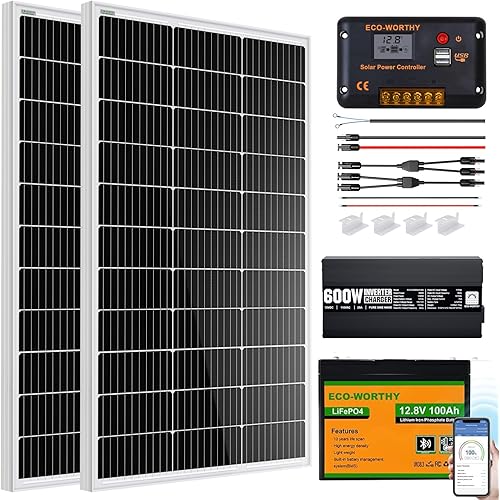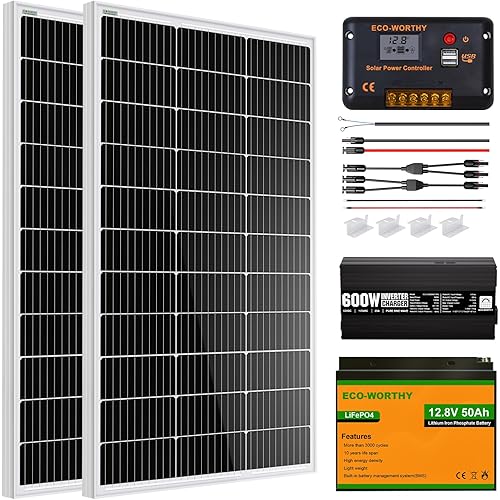ELECAENTA 120W Portable Solar Panel for Power Station, 25% High Efficiency (3rd Gen 2024 Release), PD 45W USB C/DC/QC 3.0, Foldable Monocrystalline ETFE Solar Charger for Outdoors Camping Off Grid



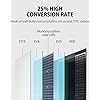


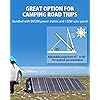
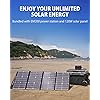

Buy Now, Pay Later
- – 6-month term
- – No impact on credit
- – Instant approval decision
- – Secure and straightforward checkout
Ready to go? Add this product to your cart and select a plan during checkout.
Payment plans are offered through our trusted finance partners Klarna, Affirm, Afterpay, Apple Pay, and PayTomorrow. No-credit-needed leasing options through Acima may also be available at checkout.
Learn more about financing & leasing here.
30-day refund/replacement
To qualify for a full refund, items must be returned in their original, unused condition. If an item is returned in a used, damaged, or materially different state, you may be granted a partial refund.
To initiate a return, please visit our Returns Center.
View our full returns policy here.
Recently Viewed
Features
- 25% HIGH CONVERSION RATE: 2024 Upgraded model, made of well-build monocrystalline silicon, an important specification of this solar panel is a conversion efficiency of up to 25%, which is one of the highest available. It is a ready-to-go solution for the outdoor off-grid
- MULTIPLE OUTPUT PORTS: Built-in smart chip with 3 output ports: 1* 45W USB C output; 1* QC 3.0 USB output; 1* DC output (5.5*2.1mm size). Suitable for charging a variety of products to meet your daily needs
- DURABLE & IPX5 WATERPROOF: Made of high-quality ETFE laminate material, making the solar panel durable. IPX5 water-resistant for protecting the charging box and cables, convenient to carry the solar panel suitcase on the go or to hang it on the RV, tent, cabin, roof, tree or beach
- HIGH COMPATIBILITY & VERSATILE: Built-in a DC cable plus extral 10 DC ports and the DC5521 to Anderson/ XT60/ 8020 cable support most of the portable power stations; Type-C PD45W / USB QC3.0 can quickly charge your smartphone, laptop, tablets, ipad, GPS, USB fan, camera or other USB devices at the same time
- WHAT YOU WILL GET: 1 x ELECAENTA 120W Portable Solar Panel, 1x DC 5.5 x 2.1mm to Solar Connector Cable, 1 x DC 5.5 x 2.1mm to Anderson/ XT60/ 8020 Cable, 10 x Connectors, 4 x Carabiner Clips
Brand: ELECAENTA
Material: Monocrystalline Silicon, Rubber, Oxford, ETFE
Product Dimensions: 19"L x 15"W x 2.17"H
Item Weight: 9.15 Pounds
Efficiency: 25% High Efficiency Conversion
Brand: ELECAENTA
Material: Monocrystalline Silicon, Rubber, Oxford, ETFE
Product Dimensions: 19"L x 15"W x 2.17"H
Item Weight: 9.15 Pounds
Efficiency: 25% High Efficiency Conversion
Connector Type: USB-A, USB QC3.0, TYPE-C
Folded Size: 19*15*2.17 inch
Included Components: 1x 10-in-1 Connector Cable, 1x 120W Portable Solar Panel, 4x Carabiner Clips, 1x DC5521 to Solar Connector Cable, 1x DC5521 to Anderson/ XT60/ 8020 Cable
AC Adapter Current: 6.6 Amps
Maximum Voltage: 18 Volts
Maximum Power: 120 Watts
Special Feature: Built-in 3m/117 inch 18 AWG DC wire; High Conversion Efficiency Up to 24%;Durable and Scratch-resistant long-lasting ETFE Material
UPC: 192236684977
Item Weight: 9.15 pounds
Manufacturer: ELECAENTA
Country of Origin: China
Item model number: LSFC-120
Is Discontinued By Manufacturer: No
Frequently asked questions
To initiate a return, please visit our Returns Center.
View our full returns policy here.
- Klarna Financing
- Affirm Pay in 4
- Affirm Financing
- Afterpay Financing
- PayTomorrow Financing
- Financing through Apple Pay
Learn more about financing & leasing here.
Similar Products
Top Amazon Reviews














